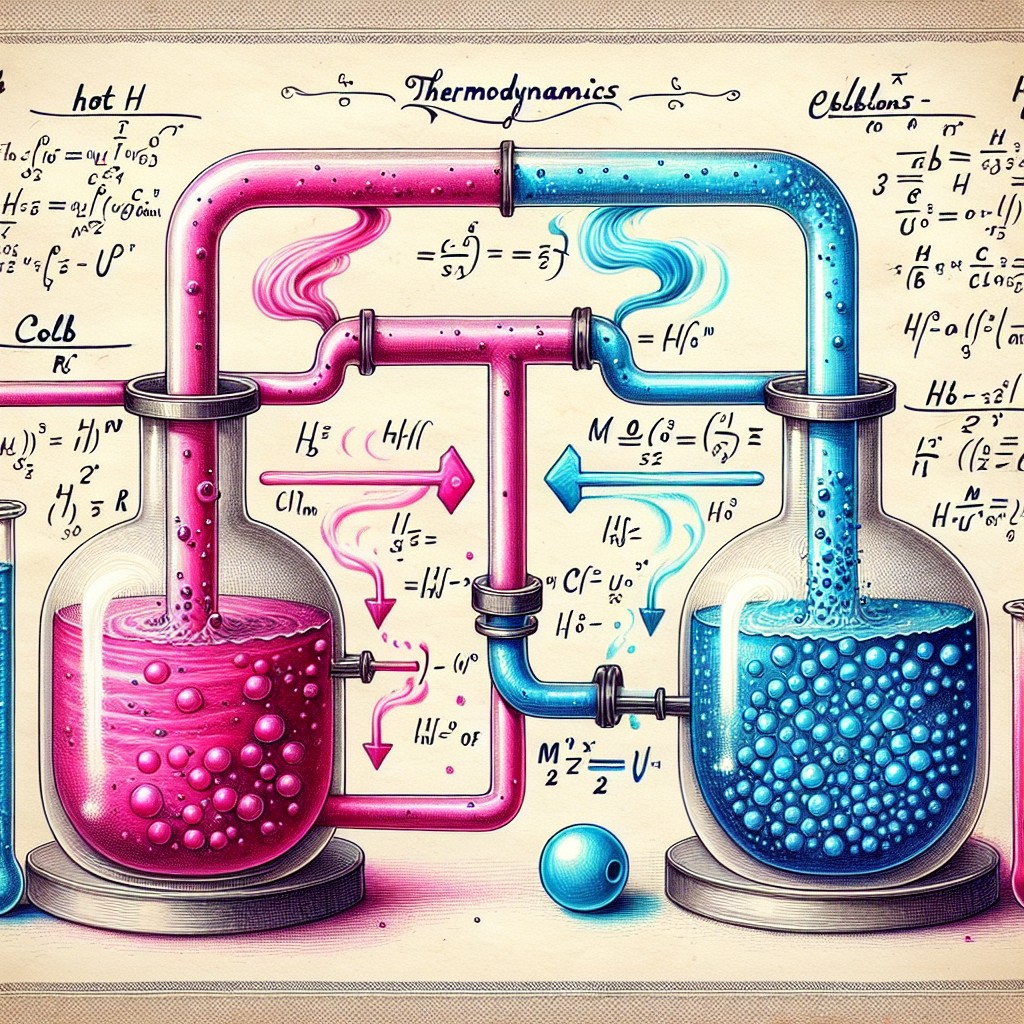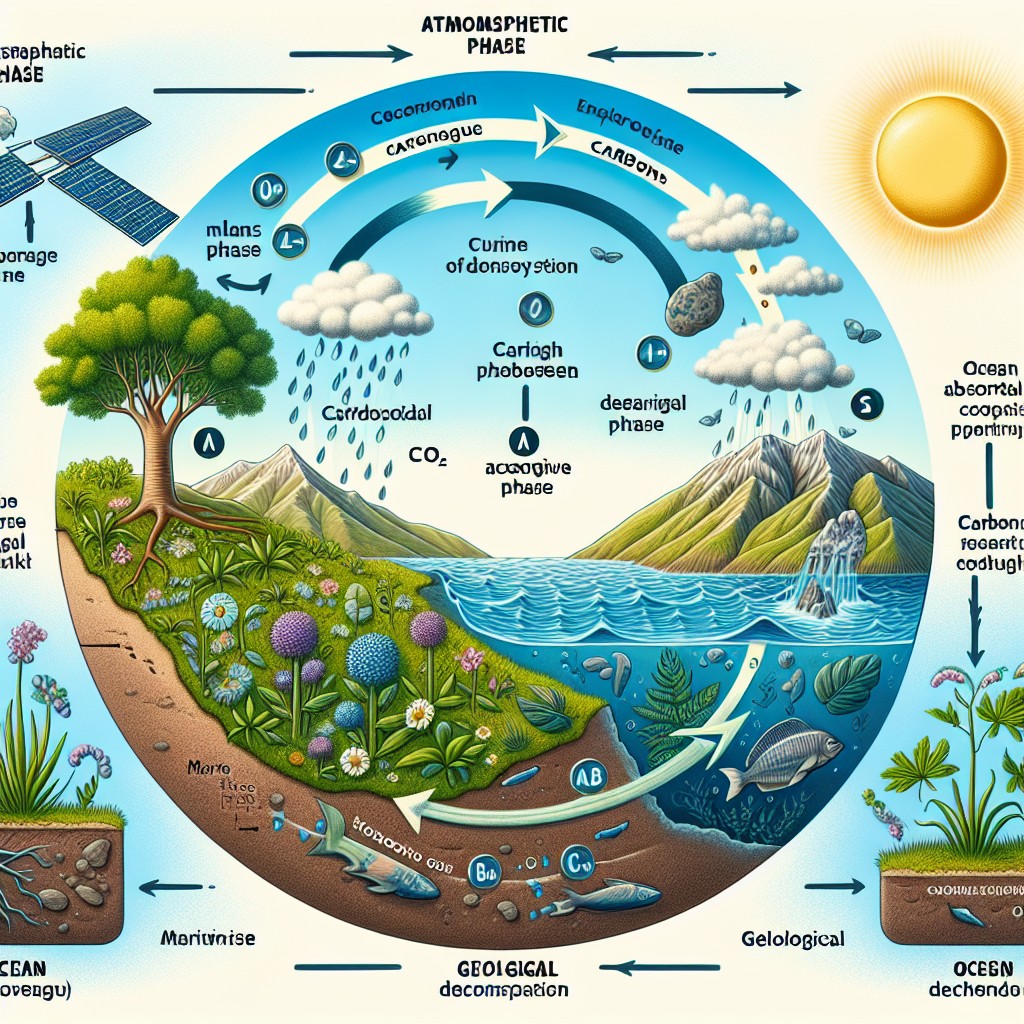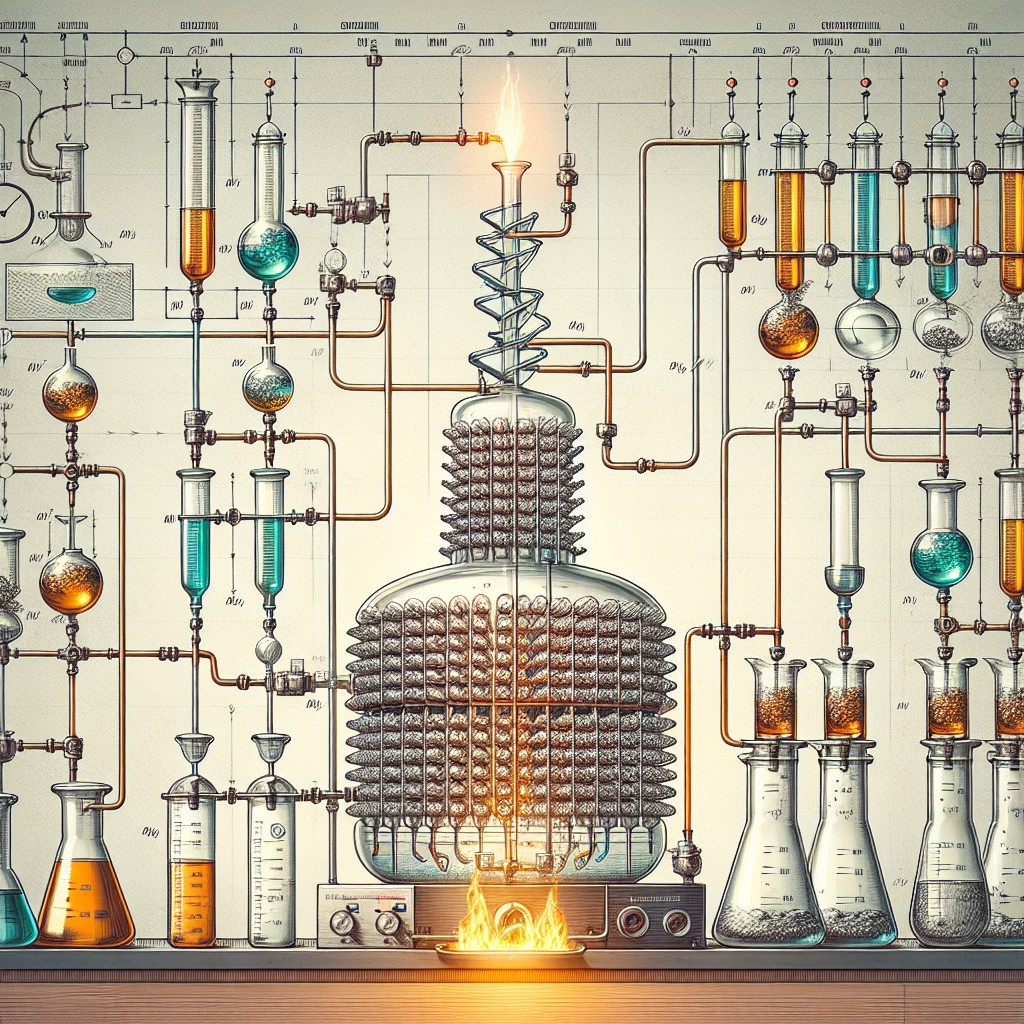Thermodynamics is the branch of physics that deals with the relationships between heat, work, and energy. It is a fundamental field of study that has applications in various scientific and engineering disciplines. The word “thermodynamics” is derived from the Greek words “thermos,” meaning heat, and “dynamis,” meaning power.
The field of thermodynamics has a rich historical background. It can be traced back to the 17th century when scientists like Robert Boyle and Robert Hooke began studying the behavior of gases. However, it was not until the 19th century that the laws of thermodynamics were formulated. The development of these laws was a result of the Industrial Revolution, which led to an increased need for understanding and controlling energy transfer in steam engines.
Thermodynamics plays a crucial role in science and engineering. It provides a framework for understanding how energy is transferred and transformed in various systems. This knowledge is essential for designing efficient engines, predicting chemical reactions, and understanding the behavior of materials at different temperatures. Without thermodynamics, many technological advancements that we take for granted today would not have been possible.
Key Takeaways
- Thermodynamics is the study of energy and its transformations.
- The First Law of Thermodynamics states that energy cannot be created or destroyed, only transferred or converted.
- The Second Law of Thermodynamics states that all natural processes tend towards an increase in entropy, or disorder.
- The Third Law of Thermodynamics states that it is impossible to reach absolute zero, the temperature at which all matter would have zero entropy.
- Thermodynamics has applications in engineering, science, chemistry, material science, biology, and the environment, and is crucial for understanding the natural world.
The First Law of Thermodynamics: Understanding Energy Conservation
The first law of thermodynamics, also known as the law of energy conservation, states that energy cannot be created or destroyed in an isolated system. It can only be transferred or transformed from one form to another. This law is based on the principle of conservation of energy, which is a fundamental concept in physics.
Energy transfer in thermodynamics can occur through two main mechanisms: heat and work. Heat is the transfer of thermal energy between two objects at different temperatures, while work is the transfer of mechanical energy through the application of force over a distance.
To understand how the first law works, let’s consider an example. Imagine a closed system consisting of a gas confined in a cylinder with a movable piston. If heat is added to the system, the gas molecules will gain kinetic energy and move faster, causing the piston to move outward. This is an example of work being done on the system. On the other hand, if work is done on the system by compressing the gas, its temperature will increase, and heat will be transferred to the surroundings.
The first law of thermodynamics is a fundamental principle that governs energy transfer in various systems. It is essential for understanding and predicting the behavior of heat engines, refrigerators, and other devices that involve energy conversion.
The Second Law of Thermodynamics: Entropy and the Direction of Processes
The second law of thermodynamics deals with the concept of entropy and the directionality of processes. Entropy is a measure of the disorder or randomness in a system. According to the second law, the entropy of an isolated system tends to increase over time.
Entropy can be thought of as a measure of how spread out or dispersed energy is within a system. In a highly ordered state, such as a crystal lattice, the entropy is low because the energy is concentrated in a small number of states. In contrast, in a highly disordered state, such as a gas, the entropy is high because the energy is spread out over a large number of states.
The second law also states that heat cannot spontaneously flow from a colder object to a hotter object. This principle is known as the Clausius statement of the second law. It implies that there are limitations on the efficiency of heat engines, which convert thermal energy into mechanical work.
Heat engines operate by taking in heat from a high-temperature reservoir, converting part of it into work, and rejecting the remaining heat to a low-temperature reservoir. The efficiency of a heat engine is defined as the ratio of the work output to the heat input. According to the second law, no heat engine can have an efficiency of 100% because some heat will always be lost to the surroundings.
The Third Law of Thermodynamics: Absolute Zero and the Unattainability of Perfection
| Concept | Definition | Example |
|---|---|---|
| Absolute Zero | The temperature at which a system has the lowest possible energy. | -273.15°C or 0 Kelvin |
| Third Law of Thermodynamics | As a system approaches absolute zero, its entropy approaches a minimum value. | Entropy of a perfect crystal at absolute zero is zero. |
| Unattainability of Perfection | It is impossible to reach absolute zero or to create a perfect crystal. | Real-world systems always have some level of imperfection or disorder. |
The third law of thermodynamics states that as the temperature of a system approaches absolute zero, the entropy of the system approaches a minimum value. Absolute zero is the lowest possible temperature, at which all molecular motion ceases.
The third law has profound implications for the behavior of matter at low temperatures. It implies that it is impossible to reach absolute zero through any finite number of processes. This is known as the unattainability of perfection.
The third law also provides a basis for understanding the behavior of materials at low temperatures. It allows scientists to predict and explain phenomena such as superconductivity and superfluidity, which occur at temperatures close to absolute zero.
Applications of Thermodynamics in Engineering and Science
Thermodynamics has numerous applications in engineering and science. One of the most important areas where thermodynamics is applied is in heat transfer. Heat transfer is the study of how thermal energy is transferred between objects or regions due to temperature differences.
In engineering, thermodynamics is used to design and optimize heat exchangers, boilers, refrigeration systems, and other devices that involve heat transfer. Understanding how heat is transferred allows engineers to design systems that are efficient and cost-effective.
Thermodynamics also plays a crucial role in materials science. It helps scientists understand the behavior of materials at different temperatures and predict their properties. For example, thermodynamics can be used to study phase transitions, such as melting and solidification, and to determine the conditions under which these transitions occur.
In physics and chemistry, thermodynamics is used to study chemical reactions and predict their outcomes. It provides a framework for understanding how energy is transferred during a reaction and how it affects the equilibrium state of the system.
Thermodynamics and the Environment: Energy Efficiency and Sustainability

Energy efficiency is a critical aspect of thermodynamics that has significant implications for the environment. Energy efficiency refers to the ratio of useful energy output to the total energy input in a system. Improving energy efficiency is essential for reducing greenhouse gas emissions, conserving natural resources, and mitigating climate change.
Thermodynamics provides the tools and principles necessary for designing energy-efficient systems. By understanding how energy is transferred and transformed, engineers can optimize the design of engines, power plants, and other devices to minimize energy losses and maximize efficiency.
Sustainable energy sources, such as solar power and wind power, also rely on thermodynamics. These sources of energy harness natural processes to generate electricity without depleting finite resources or emitting greenhouse gases. Thermodynamics plays a crucial role in understanding and optimizing these processes.
Thermodynamics also has applications in environmental science. It helps scientists understand the behavior of pollutants in the atmosphere, predict the impact of climate change on ecosystems, and develop strategies for mitigating environmental damage.
The Role of Thermodynamics in Chemistry and Material Science
Thermodynamics is an essential tool in chemistry for understanding chemical reactions and predicting their outcomes. Chemical reactions involve the transfer and transformation of energy, which can be described using thermodynamic principles.
Thermodynamics allows chemists to determine whether a reaction will occur spontaneously or require an input of energy. It also provides a framework for calculating the equilibrium constant of a reaction, which is a measure of how far the reaction proceeds towards completion.
In material science, thermodynamics is used to study phase transitions and predict the behavior of materials at different temperatures. Phase transitions occur when a material changes from one state to another, such as from solid to liquid or from liquid to gas. Thermodynamics provides a framework for understanding these transitions and predicting their conditions.
Thermodynamics also plays a crucial role in materials engineering, where it is used to design and optimize materials for specific applications. By understanding the behavior of materials at different temperatures, engineers can develop materials with desired properties, such as high strength, low thermal conductivity, or resistance to corrosion.
Thermodynamics and Biology: Understanding the Energetics of Living Systems
Thermodynamics is also applicable to the study of biological systems. Living organisms are highly complex systems that require a constant input of energy to maintain their structure and carry out their functions.
Energy transfer in biological systems occurs through metabolic processes. Metabolism is the set of chemical reactions that occur within cells to convert food into energy and other essential molecules. Thermodynamics provides a framework for understanding how energy is transferred and transformed during these processes.
The laws of thermodynamics also apply to biological systems. The first law states that energy cannot be created or destroyed, only transferred or transformed. In biological systems, energy is obtained from food and converted into chemical energy in the form of adenosine triphosphate (ATP), which is used as a source of energy for cellular processes.
The second law of thermodynamics applies to biological systems as well. It states that the entropy of an isolated system tends to increase over time. In living organisms, entropy is constantly being produced as a result of metabolic processes. However, living organisms are able to maintain their internal order by continuously taking in energy from their environment.
The Future of Thermodynamics: Advancements and Emerging Fields
Thermodynamics is a field that continues to evolve and advance. Researchers are constantly making new discoveries and developing new applications for thermodynamic principles.
Advancements in thermodynamics research include the development of new materials with unique properties, such as shape memory alloys and photovoltaic materials. These materials have the potential to revolutionize various industries, including aerospace, electronics, and renewable energy.
Emerging fields of thermodynamics include nanoscale thermodynamics and quantum thermodynamics. Nanoscale thermodynamics focuses on understanding the behavior of materials at the nanoscale, where quantum effects become significant. Quantum thermodynamics combines the principles of quantum mechanics and thermodynamics to study energy transfer and conversion in quantum systems.
The potential impact of thermodynamics on future technologies is vast. It has the potential to revolutionize energy production and storage, improve the efficiency of engines and power plants, and enable the development of new materials with unique properties.
The Importance of Thermodynamics in Understanding the Natural World
In conclusion, thermodynamics is a fundamental field of study that plays a crucial role in science and engineering. It provides a framework for understanding how energy is transferred and transformed in various systems, from heat engines to chemical reactions to biological processes.
Thermodynamics has applications in numerous fields, including engineering, materials science, physics, chemistry, and biology. It helps engineers design efficient systems, scientists predict the behavior of materials, and researchers understand the energetics of living systems.
The future of thermodynamics holds great promise. Advancements in research and emerging fields have the potential to revolutionize various industries and technologies. Thermodynamics will continue to be a vital tool for understanding the natural world and developing sustainable solutions to global challenges.
FAQs
What is thermodynamics?
Thermodynamics is a branch of physics that deals with the relationships between heat, energy, and work.
What are the laws of thermodynamics?
The laws of thermodynamics are four fundamental laws that govern the behavior of energy and matter in the universe. They are the zeroth law, the first law, the second law, and the third law.
What is the zeroth law of thermodynamics?
The zeroth law of thermodynamics states that if two systems are in thermal equilibrium with a third system, then they are in thermal equilibrium with each other.
What is the first law of thermodynamics?
The first law of thermodynamics, also known as the law of conservation of energy, states that energy cannot be created or destroyed, only transferred or converted from one form to another.
What is the second law of thermodynamics?
The second law of thermodynamics states that the total entropy of a closed system will always increase over time.
What is the third law of thermodynamics?
The third law of thermodynamics states that it is impossible to reach absolute zero, the temperature at which all matter would have zero entropy.
What is entropy?
Entropy is a measure of the disorder or randomness of a system. It is a thermodynamic property that increases over time in closed systems.
What is the difference between heat and temperature?
Heat is the transfer of energy from one system to another due to a temperature difference, while temperature is a measure of the average kinetic energy of the particles in a system.
What is a thermodynamic system?
A thermodynamic system is a region of space that is being studied in thermodynamics. It can be a closed system, an open system, or an isolated system.
What is an example of a thermodynamic process?
An example of a thermodynamic process is the expansion of a gas in a piston-cylinder system. As the gas expands, it does work on the piston and the temperature and pressure of the gas change.



